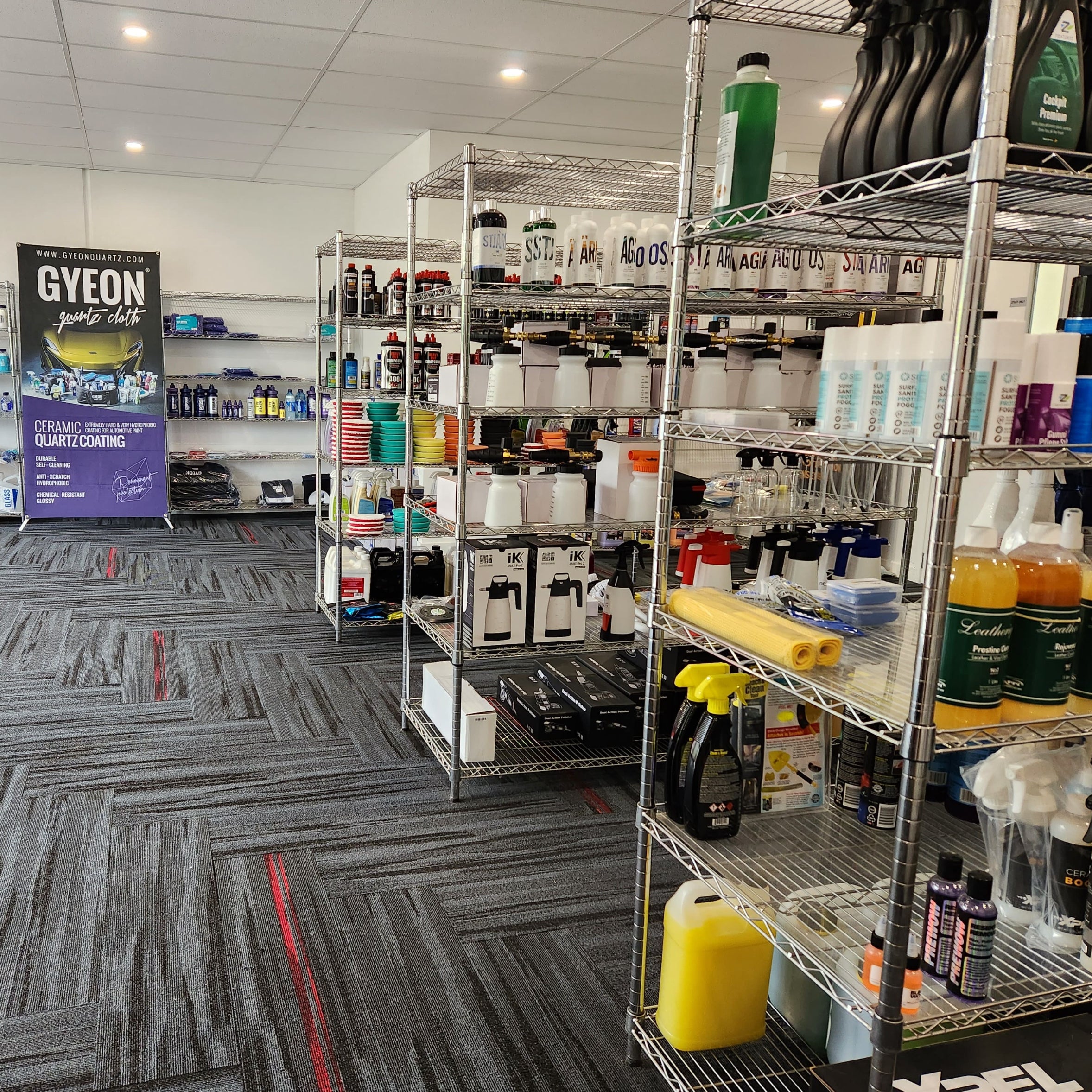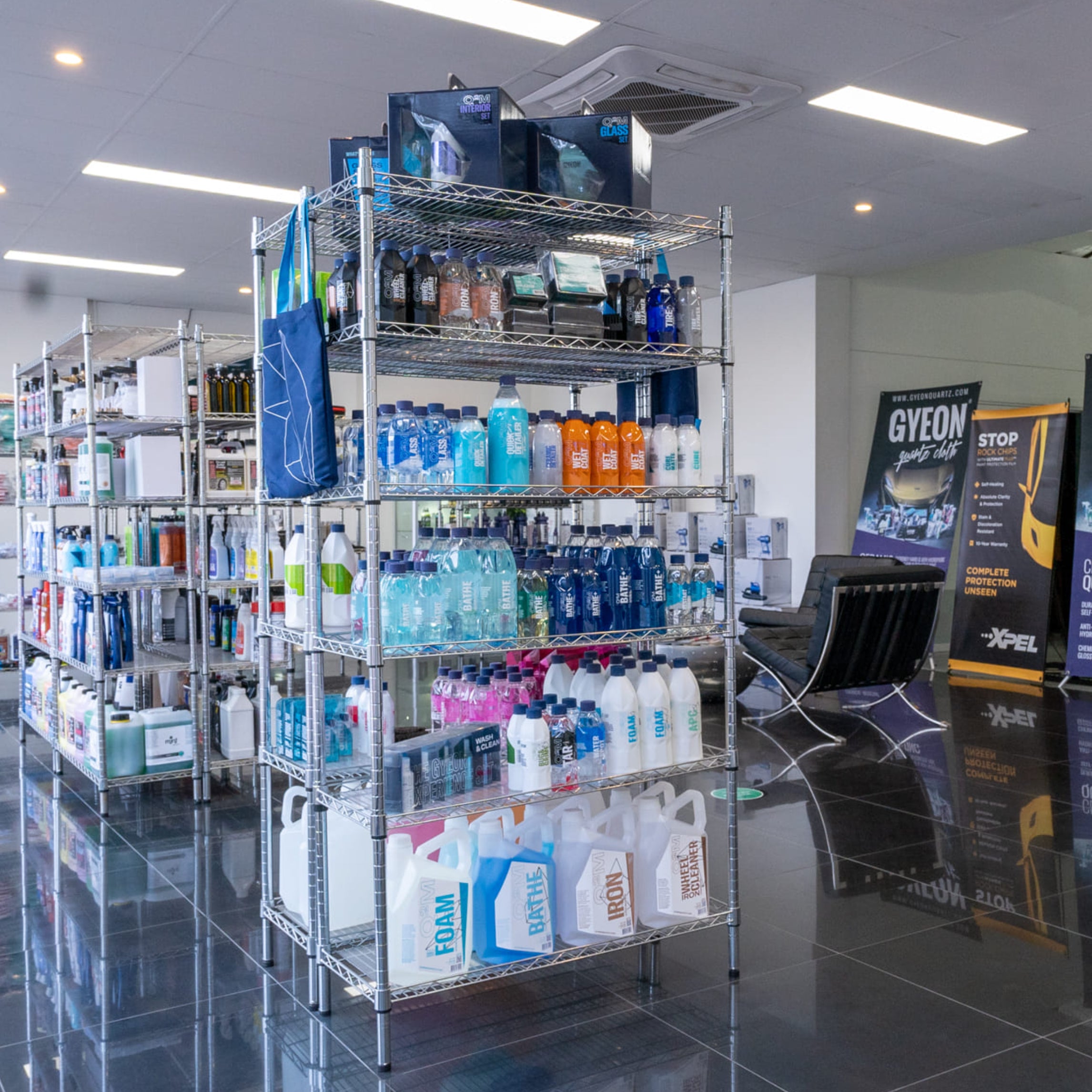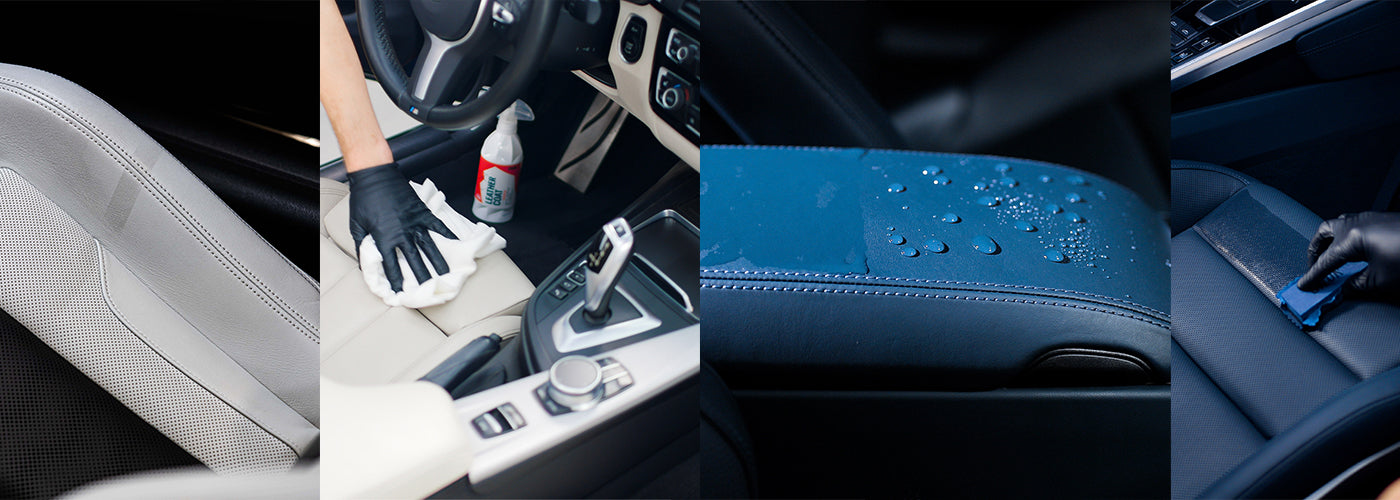Let’s be honest, most people think the job’s done as soon as they rinse off the soap. But that’s where the real magic happens. Drying your car properly is what separates a standard wash from a professional-level detail. It’s the make-or-break stage that decides whether your car glows under the sun or ends up spotted, streaky, and scratched.
If you’ve ever let your car air dry and wondered why it looked worse afterwards, you’ve met your enemy: hard water. As the water evaporates, minerals and contaminants are left behind, bonding to your paint and creating those dreaded white marks. On darker cars, they’re especially noticeable, but every finish is at risk. Add in the wrong towel or drying technique, and you’ll introduce swirl marks that dull the surface over time.
This guide covers everything you need to know about drying your car the right way, the tools, techniques, and timing that deliver a streak-free, spotless finish every time.
The Hidden Damage: Why Drying Matters More Than You Think
Hard water is a silent killer of great paintwork. Across most parts of Australia, our tap water is loaded with minerals like calcium and magnesium. They’re fine for drinking, but they wreak havoc on your clear coat. When left to dry naturally, these minerals stick to your paint and leave behind stubborn white spots. Over time, they can even etch into the surface, requiring polishing to remove.

But it’s not just water spots you need to worry about. Every time you use an old chamois, rag, or bath towel, you’re increasing the risk of micro-scratches. These tiny imperfections might seem harmless at first, but after a few washes, your car starts to lose its deep, reflective gloss.
The key to avoiding both problems? The right tools, the right products, and the right technique. Let’s break down the essentials.
Essential Tools for a Flawless Finish
Whether you prefer a quick weekend wash or a full detailing session, having the right drying tools makes all the difference. Below, we’ll look at two main approaches, high-quality microfibre towels and dedicated car dryers, along with when to use each and how to get the best results.
Microfibre Towels: The Everyday Essential
Microfibre towels are the go-to choice for many enthusiasts and professionals alike. Unlike old-school chamois or bath towels, microfiber towels are designed to lift and trap water safely, significantly minimising the scratching risk associated with dirt or grit. The secret lies in their ultra-fine fibres, which are incredibly soft, absorbent, and gentle on clear coats. Using the right towel drying method ensures optimal car cleanliness and finish.

When to Use
Microfibre towels are ideal for quick drying sessions, weekend washes, or maintenance cleans. If your car isn’t ceramic coated or has minimal protection, a towel will make drying far easier, since uncoated surfaces hold onto water more stubbornly.
They’re also great if you’re washing in cooler weather or under shade, where water doesn’t evaporate too fast. Towels give you control, prevent water spots, and deliver that perfect showroom look without needing extra equipment.
How to Use
Start with a freshly washed car, ideally rinsed with clean water. Use a high-quality, high-GSM towel like the GYEON SilkDryer EVO. Lay it flat over the surface and let it absorb the water by weight, rather than scrubbing or wiping.
Once done, check for drips around mirrors and trims. A quick follow-up with a smaller towel will catch any leftover water.
Car Dryers and Air Blowers: The Touchless Option
For those who want the safest, most efficient drying method, car dryers are unbeatable. These advanced machines blow warm, filtered air across your car, swiftly removing moisture and water droplets from every nook and cranny, including crevices that might otherwise trap debris or particles. This touchless process ensures a flawless finish, eliminating the risk of swirl marks or marring and enhancing the surface lustre of your vehicle.

When to Use
Air dryers are perfect for vehicles protected with ceramic coatings or sealants. These surfaces have hydrophobic properties that cause water to bead up and slide away easily, making air drying fast and effective.
If your car is coated, this method also preserves the finish better by avoiding any direct contact. It’s ideal for detailers, enthusiasts with premium finishes, or anyone serious about long-term paint preservation.
However, if your car doesn’t have a coating, you might find that water clings more to the panels. In that case, a hybrid approach works best: use the dryer first for tricky areas, then finish with a towel for complete dryness.
How to Use
Once you’ve rinsed your car, grab a dedicated dryer like the BLO Air-GT. Start at the top and work your way down, focusing on crevices, mirrors, badges, grilles, and door jambs, all the spots where water tends to hide.
Keep the nozzle moving and maintain a consistent distance of around 10–20 cm from the surface. The warm, filtered air will quickly push water off panels and out of gaps. You’ll notice the water beads roll effortlessly across the surface, especially if your car has a ceramic coating or sealant.

Once finished, inspect the car under light for any lingering droplets, and touch them up with a microfibre towel if necessary.
Combining Both for the Best Results
For most enthusiasts, the perfect drying routine uses both methods together. Start by using a car dryer or blower to clear out trapped water from mirrors, trims, emblems, and wheel nuts, anywhere water likes to hide and drip later. Once the bulk of the moisture is gone, follow up with a clean, plush microfibre towel to remove the light film of water left behind and add that finishing touch. This approach gives you the best of both worlds: the safety of a touchless dry and the control of a precision hand finish. It’s the same system professional detailers use to achieve spotless, streak-free results every single time.
Caring for Your Microfibre Towels
Microfibre towels are a detailer’s best friend, but they need proper care to perform their best. If you are drying a properly cleaned and rinsed car, your drying towels won’t need to be cleaned after every wash, and can be airdried post-wash. When you do have to wash them, use a dedicated microfibre detergent like Gyeon Towel Wash. Regular laundry products often contain fabric softeners or optical brighteners that clog the fibres and reduce absorbency.
Use warm water on a gentle cycle, skip the softeners, and air dry if possible. If you use a dryer, keep it on low heat to avoid melting the fibres. Store towels in a sealed container or zip bag to keep dust out.
And here’s a pro tip: rotate your towels based on use. Keep your plush drying towels separate from your interior or wheel towels. That way, you’ll always have clean, safe microfibres ready for the job.
A Few Common Drying Mistakes to Avoid
- Letting the car air dry: Even in the shade, minerals in water will leave spots that bond to paint.
- Using old chamois or bath towels: These cause friction and micro-scratches that build up over time.
- Drying in direct sunlight: Heat accelerates evaporation, leaving streaks and water marks before you finish.
- Rushing the process: Skipping drying aids or clean towels might save time now, but you’ll spend more later fixing damage.

The Final Word
Drying isn’t just about getting your car water-free; it’s about protecting your finish and keeping that shine for the long haul. Whether you prefer the simplicity of a high-quality microfibre towel or the precision of a touchless air dryer, the goal is the same: no water spots, no scratches, and no streaks.
For uncoated cars, stick with the tried-and-true towel method for better control and faster results. For coated cars, take advantage of the slick hydrophobic surface and go touchless with a blower for a truly swirl-free finish.
Combine the right drying technique with pH-safe washes and a good drying aid, and you’ll not only extend the life of your paint protection but also make every wash easier than the last. A few extra minutes of care after the rinse go a long way, leaving your car gleaming, streak-free, and protected every single time.





